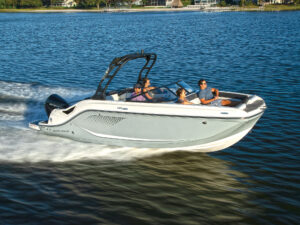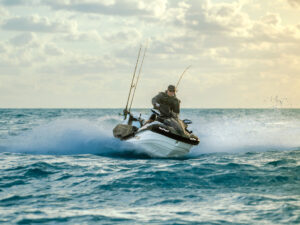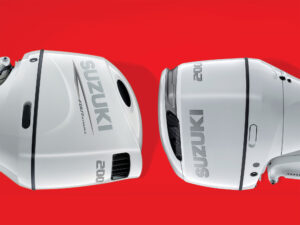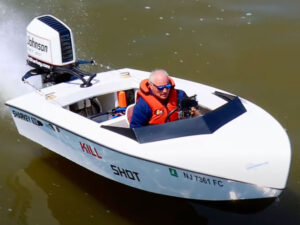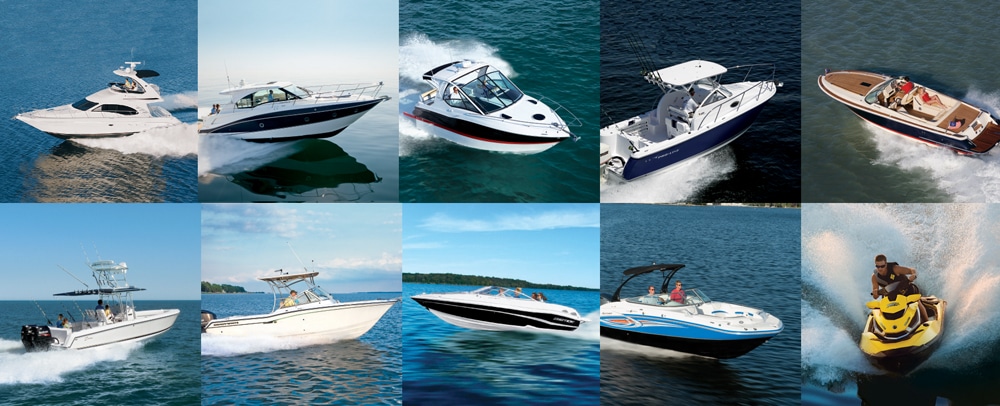
How to Buy the Perfect Boat

How to Buy the Perfect Boat
Determining the type of water you intend to boat in most of the time drives a cascading series of decisions that can affect diverse characteristics, from which beach or cove you can explore to economy of operation. Hulls with deeper-V shapes ride smoother but draw more water and may require more power to achieve a given speed.

How to Buy the Perfect Boat

How to Buy the Perfect Boat
Marinas are costly but convenient. A trailer requires maintenance and registration, yet provides self-sufficient freedom.

How to Buy the Perfect Boat
The rated capacity, or the number of berths or seats, isn’t necessarily equal to the number of people that will be comfortable aboard. What’s your average outing duration?

How to Buy the Perfect Boat
Displacement is a measure of volume and so is a better measure of boat size, especially for a cruiser. Most service fees are based on LOA.

How to Buy the Perfect Boat
Is sleeping aboard a reality for you? An alternative is to cruise to waterside hotels. Of course nothing beats dawn breaking in a scenic cove.

How to Buy the Perfect Boat
You can fish aboard a ski boat, ski from a fish boat and party aboard any boat. Be sure to consider the compromises before you buy.
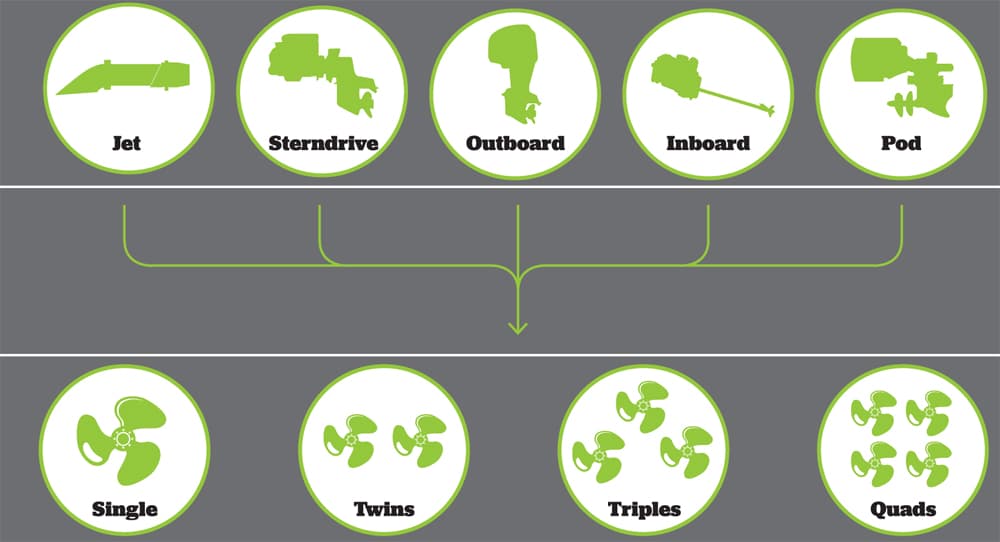
How to Buy the Perfect Boat
Power choices are more varied than ever. Runabouts with jets and outboards now compete with sterndrives, and larger boats now feature pods or outboards in addition to sterndrives and inboards. Multiple engines make sense for enhanced dockside maneuverability, redundant safety for boaters operating far from shore and the production of enough horsepower to make the boat plane.How much is that? As a rule of thumb, look for a minimum of 100 horsepower per 2,000 pounds of displacement, including the weight of engines, gear and crew.

How to Buy the Perfect Boat
You can plunk down a bag of cash for a boat, get a loan or provide a combination of trade-in, cash and financing. You know the price now, but you won’t know the cost until you sell the boat or trade it in. Boat loan rates averaged between 4.9 and 8 percent as we went to press. But rates change, so shopping as hard for them as for the boat pays off. Coming Clean
When you trade in your boat, your dealer has to sell two boats to make one sale. This can weaken your negotiating position.

How to Buy the Perfect Boat
Trading in is often simpler. Selling it yourself usually nets a higher price but takes time and offers no tax advantages.

How to Buy the Perfect Boat
Boat loans can be stretched out over many years, easing the “cost entry.” Paying cash makes trading up — or out — easier.
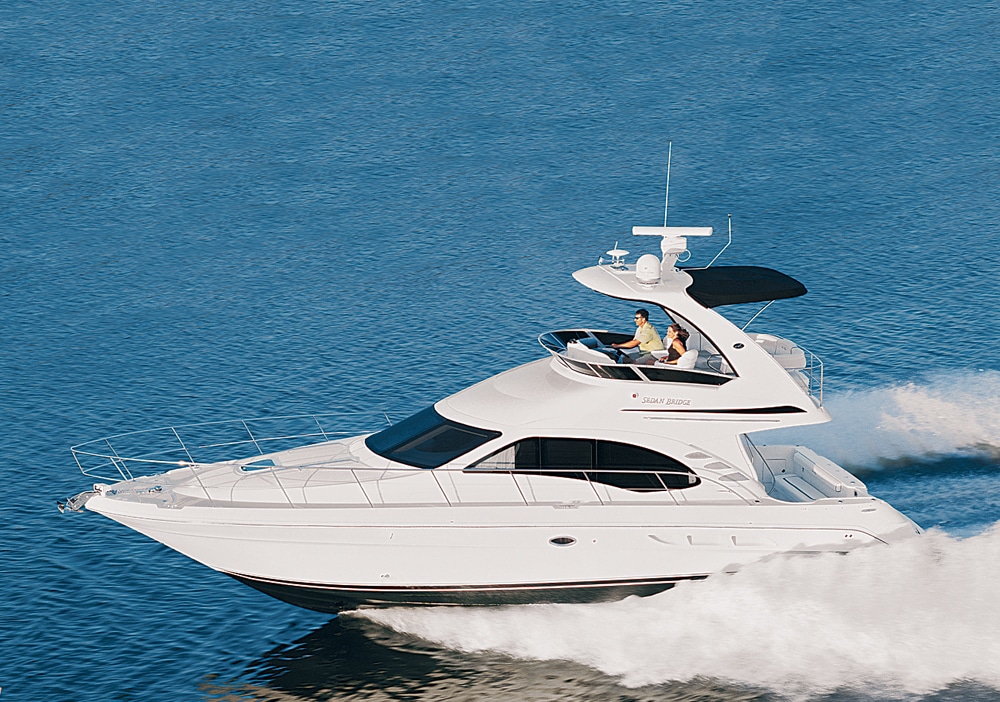
How to Buy the Perfect Boat
A flying-bridge boat provides more living space than a comparably sized express. Flybridge visibility is generally better, though seeing the transon during docking can be hard.
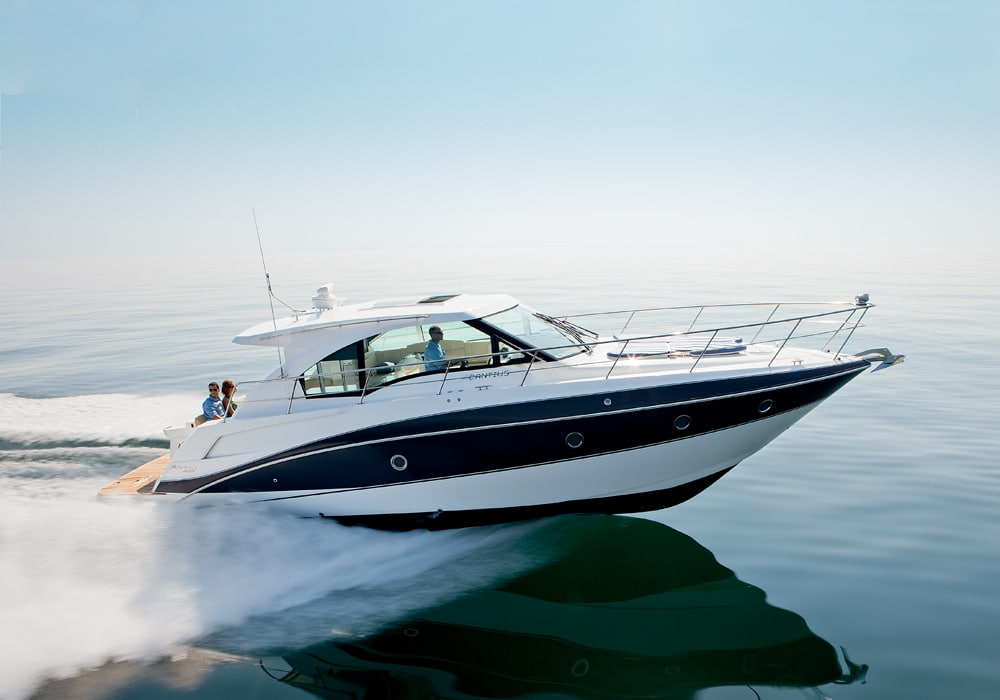
How to Buy the Perfect Boat
Express boats offer less windage while docking and eliminate ladders and stairs, and their lower top-hamper reduces their rolling motion. The low, sleek looks garner points too.
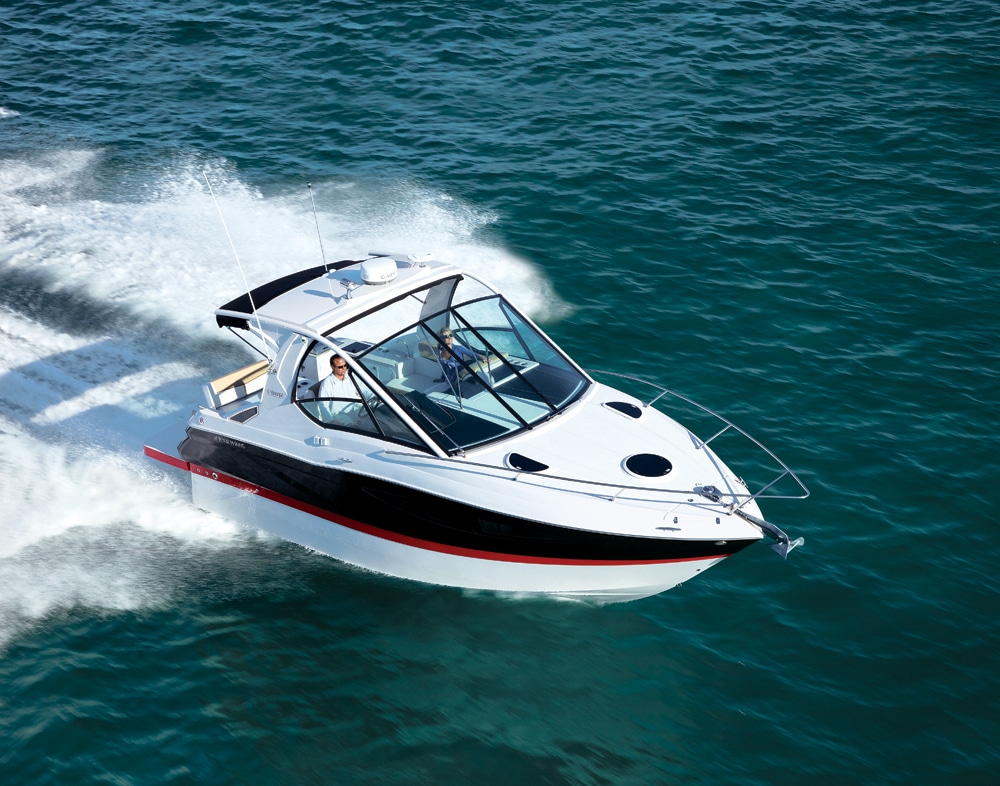
How to Buy the Perfect Boat
Really a subset of express cruisers less than 30 feet LOA, midcabins offer a berth under the helm deck and offer maximum berth count in the shortest length. Many are trailerable.
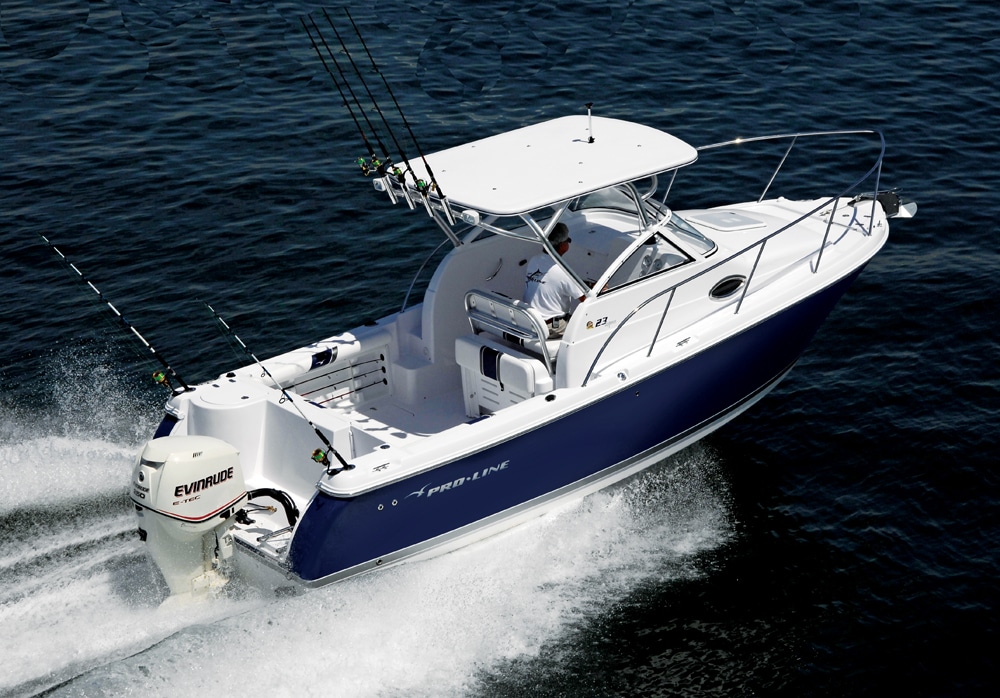
How to Buy the Perfect Boat
The cabins aboard these fishing boats are smaller than in express or midcabin boats due to the recessed, rail-protected walkways providing safer, easier access to the bow.
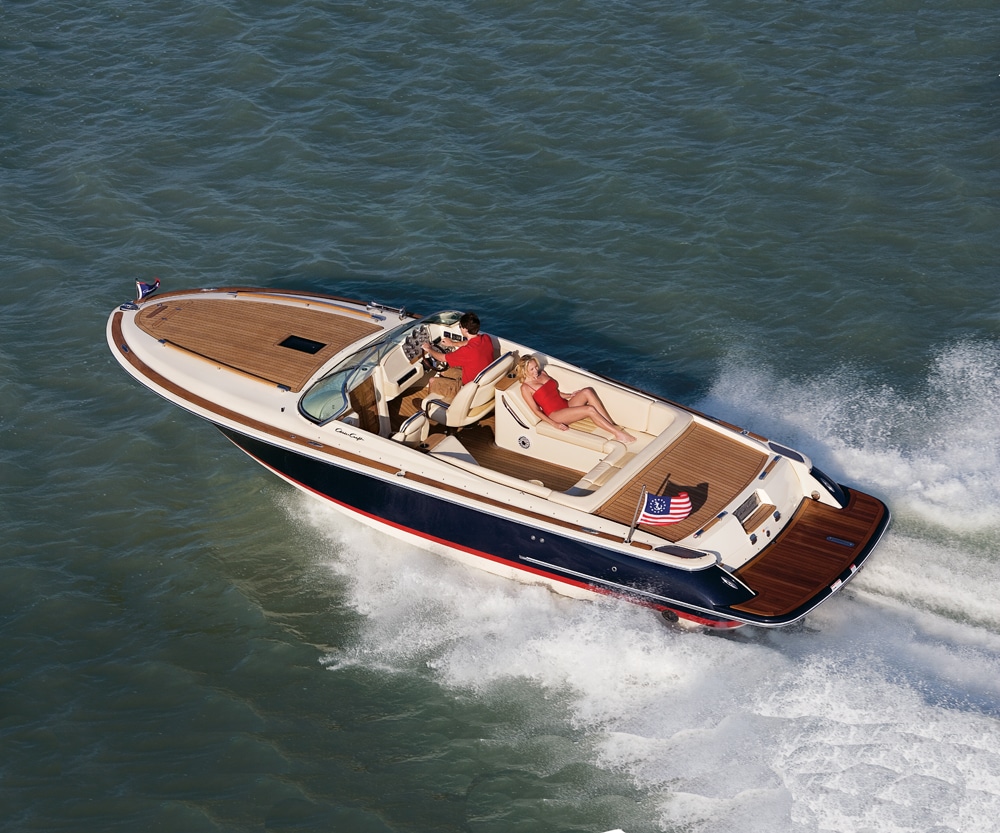
How to Buy the Perfect Boat
Sometimes called “sport boats,” a cuddy cabin provides a cushioned, crawl-in space ideal for taking naps, hiding a head and serving as lockable stowage. Racier looks than a bowrider.
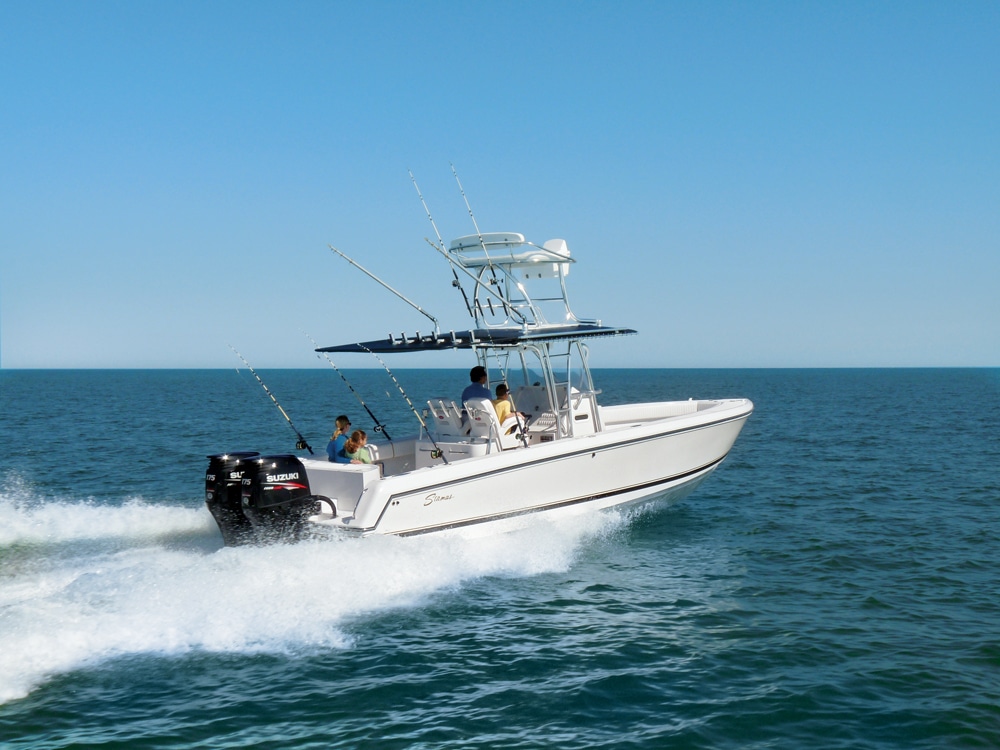
How to Buy the Perfect Boat
Complete 360-degree access around the boat and acres of cockpit make these the longtime darlings of anglers. Many are now equipped for day-tripping.
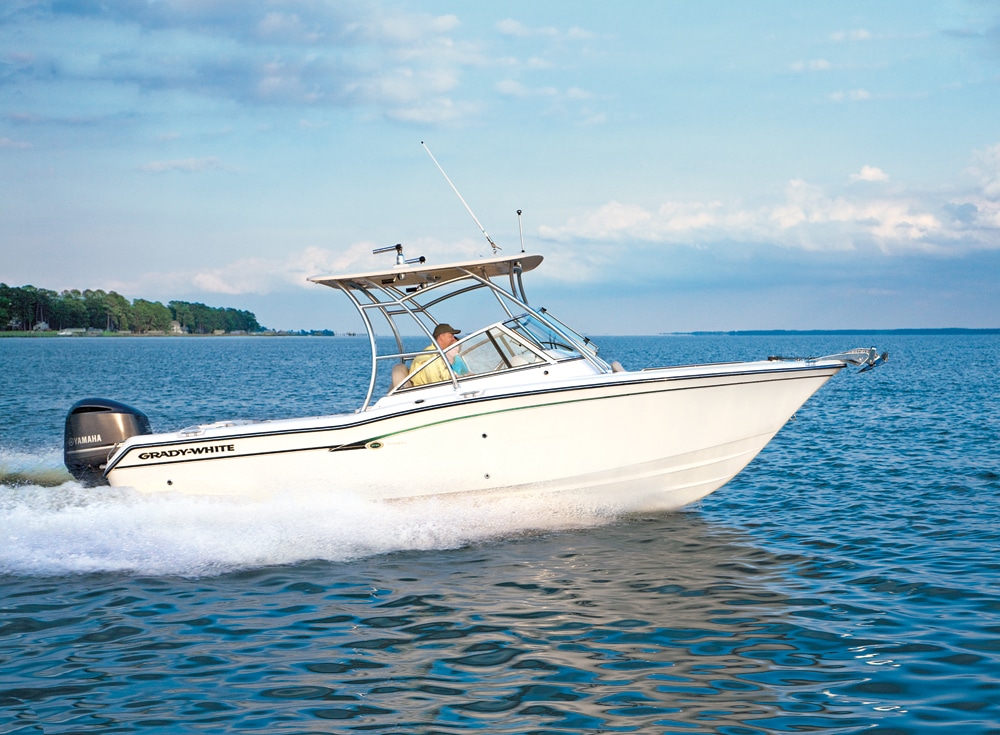
How to Buy the Perfect Boat
Self-bailing cockpits, standard fishing features and hulls designed for open water differentiate these split-windshield boats from bowriders. Available as large as 40 feet.
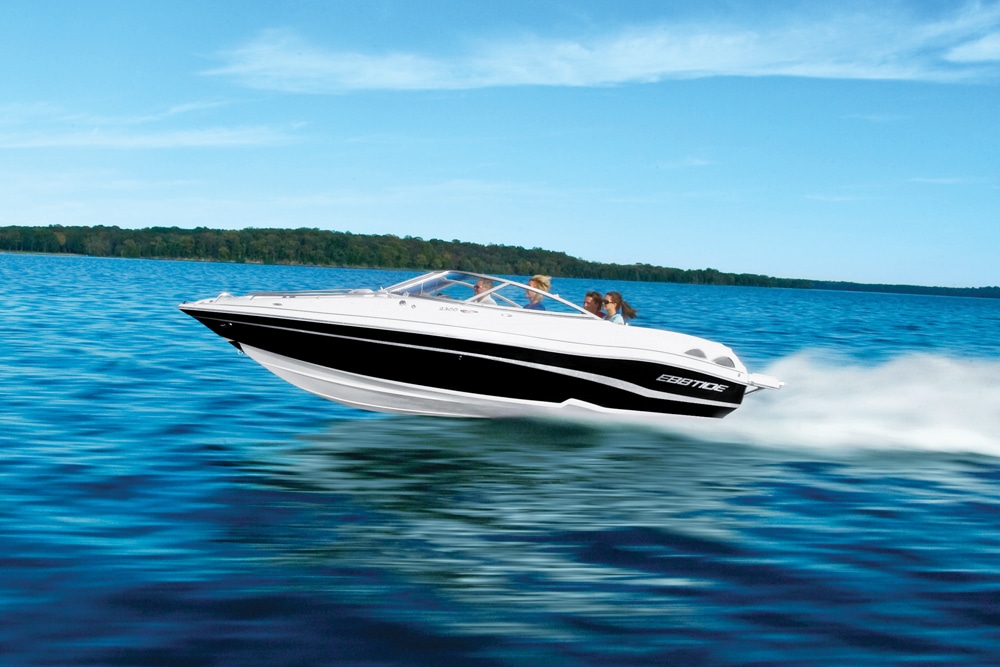
How to Buy the Perfect Boat
The quintessential “day boats,” bowriders provide maximum lounging topside. Most have a provision for an enclosed head, and larger versions sport berths and galleys.
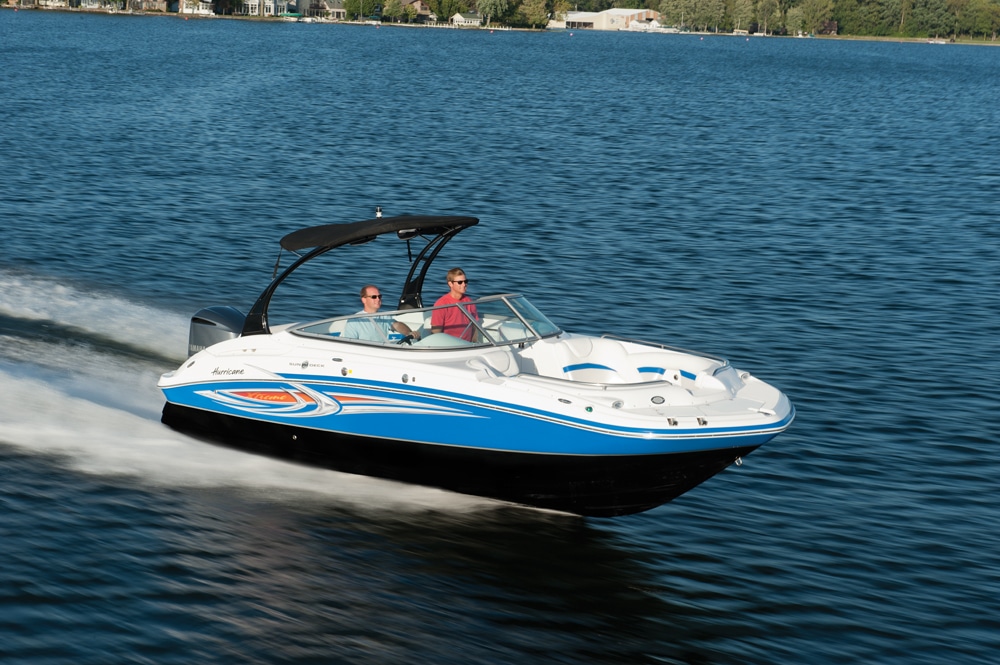
How to Buy the Perfect Boat
Deck boats carry the width of their beam to the bow for maximized space. Generally they have less deadrise than bowriders, but the distinctions are now blurring.
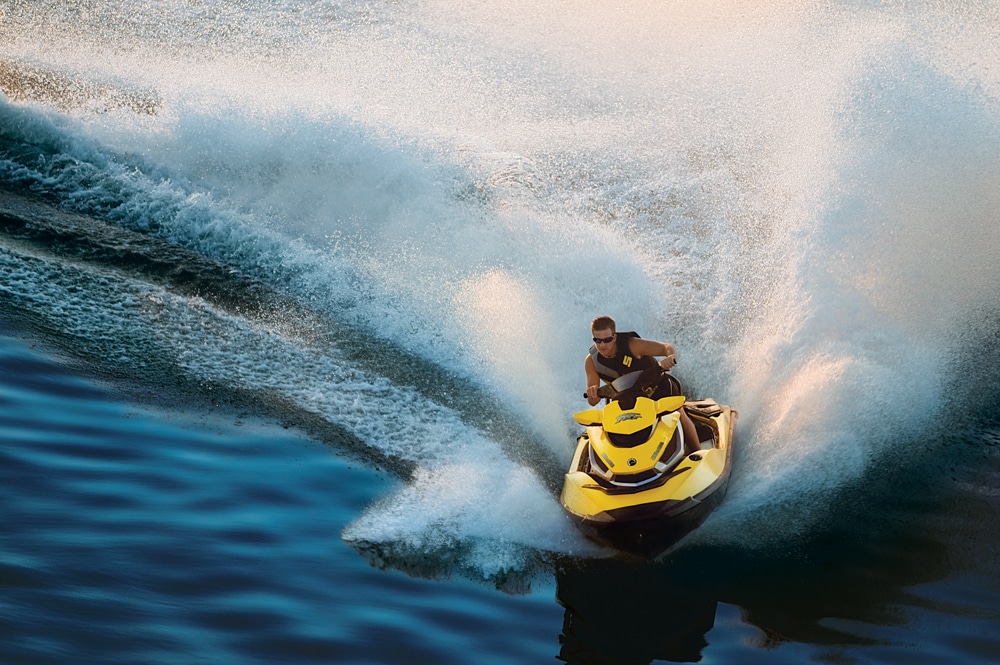
How to Buy the Perfect Boat
A far cry from the “stand-up” models some may think of, these jet-powered craft provide excitement, economy and easy trailerability, in trade for few onboard amenities.
You’re headed to the boat show to make the most important purchase of your life. You’ve called in sick on a Tuesday so you can prowl the aisles without fighting weekend crowds. The kids are at school and your wife is at work. It’s time to get serious. You know what kind of boat you want and you have a budget in mind. The only thing you’re missing is the knowledge to differentiate between a pretender and a contender, the little clues that tell you if a builder has done the job right or taken the easy way out. So here it is — on the following pages you’ll find everything you need to know to make that salesman realize he’s not dealing with some hull-thumping wannabe.
Now is the best time to buy your next boat!
—THE BOATING TECH TEAM
THE HULL
MAKING WAVES
Stand at the stern and look forward along the topsides. You’re checking for waves, ripples, pits, or other imperfections. Top-shelf fiberglass work is as smooth as a mirror. Also watch for flat spots on the sides and curves along the length of the chines that could mean the boat was removed from the mold before it cured. While you’re at the stern, eyeball the rubrail. It should be straight with only minor hints of the silicone that’s sealing it. Waviness indicates that the hull and deck didn’t fit together cleanly.
SQUARE AND FAIR
If, in construction, the hull and deck don’t line up, the hull can become twisted as the two parts are forced together. Even small differences can affect handling. To check, tape some string to the bow at the waterline and bring it back along one side of the boat to the edge of the transom. Do the same on the other side. The two lengths of string should be the same.
SEALED FOR LIFE
Traditionally, the best way to join the hull and deck is with bolts and then bonding from the inside with fiberglass. But technology marches on. Methacrylate adhesives, like Plexus, get the job done right also. The best places to look at how the joint was done are inside the anchor locker and engine compartment.
WOOD CAN BE GOOD
Wood stringers and frames have gotten a lot of bad press since the advent of fiberglass internal support structures. Wood can be acceptable if it’s pressure treated to resist rot and encapsulated in fiberglass. Crawl into the engine room and look for at least 2″ of overlapping glass cloth. You should see no “line bubbles,” which look like white streaks, in the corners. Fiberglass structures must meet the hull evenly and be faired into the hull with putty. Any blobs of putty and lumps of built-up fiberglass is a sign of poor mating or bonding.
GET PUNCHY
Position yourself on the other side of the boat from the salesperson before you try this trick. Put one hand palm down on the hull above the waterline and hit the hull about 3′ away with your other fist. You shouldn’t feel any vibration.
EARN YOUR STRIPES
Run your hand across the colors on the hullside. If the colors are all sprayed in the gel coat, you should feel no edges between them. This method provides the most durable finish. Painted-on graphics and vinyl decals have a raised edge and don’t hold up, but they’re easier to fix.
THUMBS UP
Take your thumb and stick it up a through-hull fitting. Now spread out the fingers of your hand. If you can stick your fingers into another through-hull fitting, they’re too close together and could weaken the hull.
GO FOR THE BRONZE
Check out the materials the through-hulls are made of. Plastic is acceptable, but top-quality builders use bronze. When you’re in the engine compartment, make sure the shutoff levers can be easily reached and the hoses are attached to the fittings with two stainless-steel clamps.
STEP UP
If you’ve ever had to raise your feet above your waist to climb a boarding ladder, you know how important it is to have several steps. A ladder should have a minimum of three steps with the lowest rung at least three feet below the water’s surface. Best is a ladder that stows in its own locker to keep the swim platform clear.
THINK BIG
Many boatbuilders say they include trim tabs as standard equipment on a boat, but the stock units are usually too small. Boats around 25′ should have tabs at least 1’6″ wide. Offshore go-fasts should have heavy-duty tabs such as Mercury K-Planes with dual hydraulic rams.
THE DECK
FLYING LEAP
Bounce around on the foredeck on your toes-like a boxer. Too much flex means it’s poorly supported. If the deck flexes or creaks, it’s too weak. At the least your hatches will leak.
ANCHORS AWAY
Any boat longer than 25′ should have an anchor locker in the foredeck. The locker should have a U-bolt to secure the rode and a cleat to tie off the rode. Hatches should be notched so they can be closed when the anchor is deployed. Larger boats should have a box dedicated to containing chain rode.
NEAT CLEATS
A cleat that is less than 6″ long is essentially useless, except for fenders. The rule of thumb is to allow 1″ of horn length for every 1⁄16″ of line diameter. Since 3⁄8″ line is the smallest dockline you should consider, a 6″ cleat is the minimum size you should accept. Of course, bigger is always better.
RIDE THE RAIL
Foredeck bowrails should hit above your knees. Anything shorter could trip you overboard. As with cleats, bowrails should be mounted with aluminum backing plates.
FRAME JOB
Stainless-steel windshield frames show that a builder is willing to go the extra mile-or three. Stainless steel costs three times as much as aluminum. Lean hard on the frame and give it a few yanks. Yes, we know you’re not supposed to, but your passengers don’t. Best to have a strong windshield to support them.
ROOM TO MOVE
Stand in the side walkways. If you can’t put your feet together side by side, the walkway is too narrow. On boats under 24′, you might have to put up with a walkway that will accommodate only one foot at a time, but accept nothing narrower than that.
LINER NOTES
Work your way into the cockpit and look for seams between the sole and inwales. Can’t find any? Good. It means the boat is made with a one-piece molded fiberglass liner that forms the cockpit and often the seat bases. This construction method is preferred over a plywood sole covered with glued-on carpet.
STAY IN THE LINES
A rectangular caulk line in the center of the cockpit sole indicates a removable fuel tank hatch. You won’t need a saw for service and annual inspections.
HATCHBACK
Stand on a deck hatch. Rise up on your toes and drop to your heels. The hatch should barely flex. To make the hatch easy for a person to get through, the opening should be a minimum of 2′ wide.
BLANK CANVAS
Remove and refasten the canvas top. Top-end builders use track systems that make installation more water resistant than snaps. The frame should be stainless steel.And the canvas should be a high-quality woven acrylic such as Sunbrella.
IN THE COCKPIT
ROOM FOR BOTH CHEEKS
Sit at the helm. If the seat feels too small, you may have caught the boatbuilder skimping to make the cockpit seem bigger. A seat should be at least 1’6″ deep. In a performance boat, bucket seats provide better support than back-to-back models. After you get up, give the seat cushioning a jab with your finger. The fabric and foam should spring back immediately from the indentation you made.
LOUNGE LIZARD
Stretch out on the aft sunlounge. Does it feel as if you’re going to roll off or is it secure? Well-designed sunlounges are recessed slightly below the aft edge or are encircled by safety rails.
STITCH IN TIME
Check the seams in the upholstery. If those on an edge have piping sewn in, they’ll last longer. An extra row of stitching on each side of the seam makes it stronger. Also, stitches should be pulled tightly down into the fabric so they don’t abrade.
BASE LINE
When you pick up a seat cushion, you should see a base of rotocast plastic or a similar material. Some builders use plywood, but this can rot unless it has been treated. The bases should also be vented on the underside to improve water drainage.
GAUGING QUALITY
All boats should have a tachometer, fuel and voltmeters, and oil pressure and water temp gauges. Big outboards and stern drives need trim gauges; go-fasts need mechanical trim indicators. Is there space for a compass, which is about the size of your fist? Or a depthsounder, which averages two fists side by side?
RIGHT OF PASSAGE
Make your way from the cockpit to the bow. Imagine what it will be like trying to get to an anchor line in the middle of the night with 4′ waves and a 20-knot wind.
MECHANICALS
WITHIN REACH
Raise the engine hatch. You should have easy access to frequently checked items such as dipsticks, fuel/water separators, and oil filters. Batteries, which need to be secured in bolted-down trays, and trim pumps should also be within reach.
HEAVY-DUTY
Any inboard or stern drive engine larger than a V-6 gasoline model should be installed with through-bolted L-bracket motor mounts with backing plates or U-shaped mounts that cap the stringer.
CLAMP IT
Wires and hoses should be protected in plastic conduit and routed through PVC tubes over long runs. Where the wires pass through bulkheads, they should be protected in rubber grommets. In the engine compartment, hoses and wires should be supported with stainless-steel cushioned clamps no more than 1’6″ apart. Give the wire harnesses a yank to feel if they’re properly supported.
SEALED WIRES
Check the bilge pump wiring harness. Most pump manufacturers provide only short leads to join the boat’s harness. The connection must be sealed to be waterproof and it should be 8″ above the bottom of the boat.
SMOOTH FINISH
The bilge beneath the engine(s) should be finished in gel coat or Awlgrip to make it easy to clean. If you see any fiberglass puddling at stringer bases or in the corners, the finish wasn’t applied with care and could be covering a bigger problem.
HIDDEN AGENDA
Get on your back and look up under the helm at the dash panel. You should have easy access to the wiring and be able to follow the leads to their destination. If it’s closed off, you’ll have to remove the panel from the front to trace any problems.
EASY ACCESS
Look around the cockpit and cabin and count the number of inspection panels providing access to wiring and plumbing fittings. These aren’t required, but a conscientious builder will provide enough to make maintenance easy.
BELOWDECKS
CEILING FAN
When you move belowdecks, can you stand up straight? True standing headroom means there’s at least 6’1″ of vertical clearance.
RUG RATS
Test carpeting that isn’t glued down by folding it over on itself. The best, heavy-duty carpeting will be too thick to fold easily or crease, so it will wear well over time.
BOUNCE FOR THE BUCK
When you sit on the salon lounges, the cushioning should feel comfortable and luxurious. Good builders use 4″ of cushioning, and high-end manufacturers go the extra step with 5″ to 7″. You’ll appreciate the extra depth during a long cruise.
DOUBLE TROUBLE
Many V-berths claim to be a queen when they’re closer to a full. Find a friend and lie down on the berths side by side. The best builders use innerspring mattresses.
FILTERED AIR
Most boats have side ports in the cabin, but manufacturers that go the extra mile fit each port and deck hatch with screens for bug-free breezes.
HEADS UP
Sit on the head and open a copy of your favorite tabloid. You should have at least 2′ of space around you, which you can measure by spreading out both pages of your newspaper.
LIP SERVICE
Place a glass on its side on the galley countertop and roll it toward the edge. It shouldn’t roll off. There should be fiddles-raised edges at least 1″ high-to keep things on the counter.
STICK FIGURES
Although fiberglass cabin “pans” have replaced wood, “stick-built” interiors, remember that service access is superior with the “inferior” wood.
CABINET MEETING
Where you can, reach behind the cabinet structures in the salon and galley. You’re hoping to find that they’re bonded in place with adhesives or fiberglass as well as being screwed into position.
LOCKER UP
Reach into a locker with your hand and feel along the back corners. Spikes of fiberglass can catch your skin or tear stowed gear. Too many builders forget to clean this up. Locker openings should be trimmed in plastic, vinyl, rubber, or aluminum. Ski lockers should be lined with molded plastic or a soft nonporous foam.

